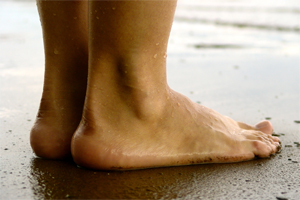statFor some women, it's about making an elegantement at special events or being a couple…

Achilles Tendonitis Causes and Treatment Options
 Chronic inflammation of the Achilles tendon is what leads to Achilles tendonitis, a condition primarily due to overuse that is commonly found in runners and other athletes. Not only athletes are affected, however. The Achilles tendon is the largest tendon in the body, and as it is one of the tendons most often used and endures a great amount of force from the body’s weight, it is more prone to injury than some of our other tendons.
Chronic inflammation of the Achilles tendon is what leads to Achilles tendonitis, a condition primarily due to overuse that is commonly found in runners and other athletes. Not only athletes are affected, however. The Achilles tendon is the largest tendon in the body, and as it is one of the tendons most often used and endures a great amount of force from the body’s weight, it is more prone to injury than some of our other tendons.
Achilles tendonitis usually begins gradually, with minor twinges and feelings of stiffness and pain in the tendon that connects the heel to the calf. The pain will often be worse when first walking on it in the morning, or when using it after a prolonged period of sitting. Though the pain diminishes as you use it, it is only due to the tendon stretching, and does not indicate that it is being healed. If these signs are ignored, the condition can become worse and degenerate to burning, shooting, piercing pain.
In addition to overuse, Achilles tendonitis may be caused by overpronation, which is when the foot rolls in toward the arch, causing the Achilles tendon to stretch more than normal. It is particularly common in those with flat feet. Women who wear high heels are also at greater risk for Achilles tendonitis, as the daily use of high heels causes the Achilles tendon to shorten in time, so when flatter shoes are worn, such as running shoes, the tendon must stretch further than it is used to.
Another condition that leads to Achilles tendonitis is tight, short calf muscles. This is why stretching before exercise is important. If the tendon is used suddenly in this tightened condition, small tears can be made in the tendon, leading to the buildup of small bits of scar tissue (the nodules of which can often be felt with your hand), and reducing flexibility.
Other causes include wearing inadequate footwear, supination (the opposite of overpronation, when the foot rolls outward), being overweight, direct trauma to the tendon, diabetes, arthritis and gout.
The Achilles tendon can take a long time to heal, as its blood supply is fairly limited. Prevention is always best of course, so always be sure to stretch before exercising. Overpronation can be treated with orthotics, such as arch supports and heel cups, which will help put your foot back in the proper alignment. A visit to your chiropractor is often a good idea, as chiropractic care can help reduce your risk of Achilles tendonitis by realigning the bones that may be pulling your leg out of alignment.
To help heal the injury itself, first rest it as much as possible and refrain from exercise that puts a strain on the Achilles tendon for a few weeks. Ice may be applied for 20 minutes at a time, particularly after any type of exercise, though be sure not to put ice directly on the skin. Use an ice pack wrapped in a damp towel or apply a bag of frozen vegetables. Pain may be managed with an anti-inflammatory medication such as acetaminophen or ibuprofen, if necessary.
Achilles tendonitis may take a few weeks or months to heal, but with proper care you can be walking and exercising pain-free once-again.




